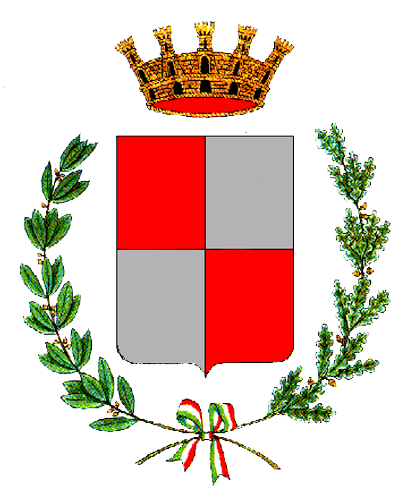DR. ENG. OTTORINO ZIBETTI NAVAL MUSEUM
Written by Ottorino Pellegri
The Dr. Eng. Ottorino Zibetti Naval Museum is housed in the ancient monastery complex of San Bernardino da Siena, one of the best evocative places in town. The convent was built in 1472 in honour of the saint who had managed to have the people of Caravaggio and the people of Treviglio, who were long-time foes, come to an understanding. Today, the former convent serves as Caravaggio Civic and Cultural Centre.
The Naval Museum is Giuseppina Bietti’s devout homage to her late husband Ottorino Zibetti, expert of ship modelling, careful collector, sea and ‘maritime things’ enthusiast. The museum opened its doors on 5 November 1978 in the presence of the public, of high local authorities and of spokespeople for military and veterans’ organizations.
The museum collection includes scale reproductions of historic ships, historical memorabilia, nautical navigational instruments, compasses, spyglass telescopes, naval equipment, marine fossils, rare seashells, medals. In addition to the items on display, there is a ‘library of the sea’ open to the public.
The items are grouped according to subjects and arranged according to specific criteria like function, provenance, and construction technique, to entertain and educate the visitors with clarity.
The museum intends, on the one hand, to be a vehicle of systematic and scientific knowledge about the history of maritime navigation and navigational instruments. On the other hand, it intends to educate and awaken in the younger generations a sense of discovery about the sea and life at sea, which can teach us a lot about life in general.
Among the items of particular importance are: the torpedo’s propeller of the M.A.S. X15, with which captain Luigi Rizzo sank the Austrian battleship SMS Szent István the morning of 10 June 1918; one strip of the ‘red tent’ and a few fragments of the gondola of the semi-rigid airship Italia used by General Umberto Nobile, both donated by the telegraph operator of the Russian icebreaker Krassin; the machine telegraph of the Italian corvette Baionetta, the small warship which on 9 September 1943 carried Vittorio Emanuele III, the last king of Italy, in exile under the false identity of Earl of Pollenzo; two maritime signal flags of the Italian destroyer Luca Tarigo, which served in a heroic, touching battle during World War II, donated by Captain Giovanni Martinelli; one ancient English sextant; one extremely rare ‘gondola iron’ (a metal ornament on the front of a gondola, the flat-bottomed Venetian rowing boat); one 16th-century ship helm steering wheel; countless original blocks; one 1890 deep-sea diving suit made from copper and bronze and one scale model of a racing speedboat donated by Mr. Piero Guerra.
The number of objects on display has increased thanks to later acquisitions for the museum collection. These include:
One marvellous faithful scale model of Amerigo Vespucci, the tall ship used to train future sailors, donated by Mr. Gerolamo Soliveri; one piece of the battle cruiser Garibaldi anchor chain, donated by commendatore Francesco Volpe, Head of the Treviglio Delegation of the National Italian Seamen Association; one scale model of a polacca (an ancient sailing vessel, similar to the xebec), the ship from which Michelangelo Merisi was shipwrecked in 1610, donated by model enthusiast Carlo Cavalli; one cast net, which was a curious circular net used for fishing, donated by Dr. Antonio Bavaro; one Lucia, traditional rowboat of Lake Como, donated by Mr. Mario Perazzi; one scale model of a Spanish frigate, donated by the Costa furniture factory; two maritime signal flags of the Italian destroyer Luca Tarigo, donated by Commanding Officer Giovanni Martinelli; two amphorae from Aquileia used for the transportation of wine, donated by the Duke of Aosta to Doctor Colonel Giuseppe Zibetti in 1916; scale models of submarines and tugboats of the German Navy and the Dutch Navy, donated by Mr. Valter Zibetti; one harpoceras falcifer, an Early Jurassic fossil found in Germany, donated by Roberto and Enrico Robecchi; other fossils, donated by Father Pierino Crispiatico; extremely rare nautical navigational instruments and photographs, donated by Dr. Pepi Merisio; corals, sponges, gorgoniae (soft corals), sea creatures, seashells, donated by Dr. Elisabetta Demurtas Arrigoni; numerous medals, crests, posters of famous vessels, donated by Vice Admiral Giuseppe De Giovanni; marine engines of Italian and foreign vessels, donated by Donato Montemitro, Mario Paloschi and Romano Gilardo; one priceless relic of the glorious submarine Scirè, which made many forays into the Bay of Gibraltar and into the harbour of Alexandria in Egypt, donated by Giovanni Cortesi, Leading Rate of the Ospitaletto Delegation of the National Italian Seamen Association.
The Dr. Eng. Ottorino Zibetti Naval Museum offers guided visits to groups of schoolchildren of all grades, visiting groups, cultural associations and tourists from every corner of Italy, and it is a long-established meeting place for sea enthusiasts.
The museum collaborates with the Italian Blood Donors’ Association, the Italian Organ Donors’ Association, the Italian Seamen Association, and cultural institutions in setting up modelling exhibitions of national importance.
The Naval Museum is open for visits on Saturdays from 3.00 p.m. to 6.00 p.m.
For information please contact our Cultural Office (Ufficio Cultura) at cultura@comune.caravaggio.bg.it or call +39 0363 356213.

